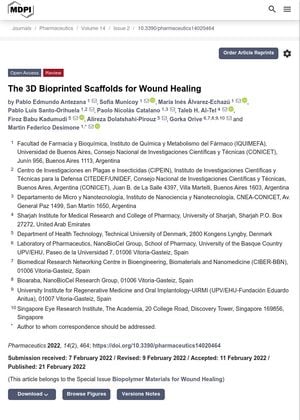The 3D Bioprinted Scaffolds for Wound Healing
February 2022
in “
Pharmaceutics
”

TLDR 3D bioprinting improves wound healing by precisely creating scaffolds with living cells and biomaterials, but faces challenges like resolution and speed.
The document reviews the use of 3D bioprinting in skin tissue engineering and wound healing, highlighting its advantages over traditional methods due to its precision and ability to incorporate living cells, growth factors, and biomolecules. Various bioprinting techniques are discussed, each with its own strengths and limitations. The use of bioinks, such as collagen, chitosan, cellulose, hyaluronic acid, and alginic acid, is emphasized due to their biocompatibility and ability to mimic tissue structure. The document also discusses the creation of 3D bioprinted scaffolds for wound healing, with examples including a skin model with sweat glands and hair follicles, and a bilayer membrane scaffold that mimics the skin's layers. Despite the potential of 3D bioprinting, challenges such as printing resolution and speed persist, and future objectives include the use of machine learning to navigate complexities in the bioprinting process.





